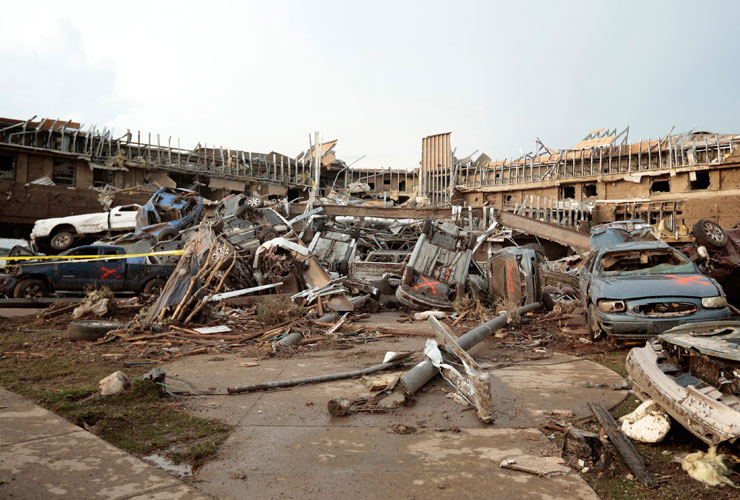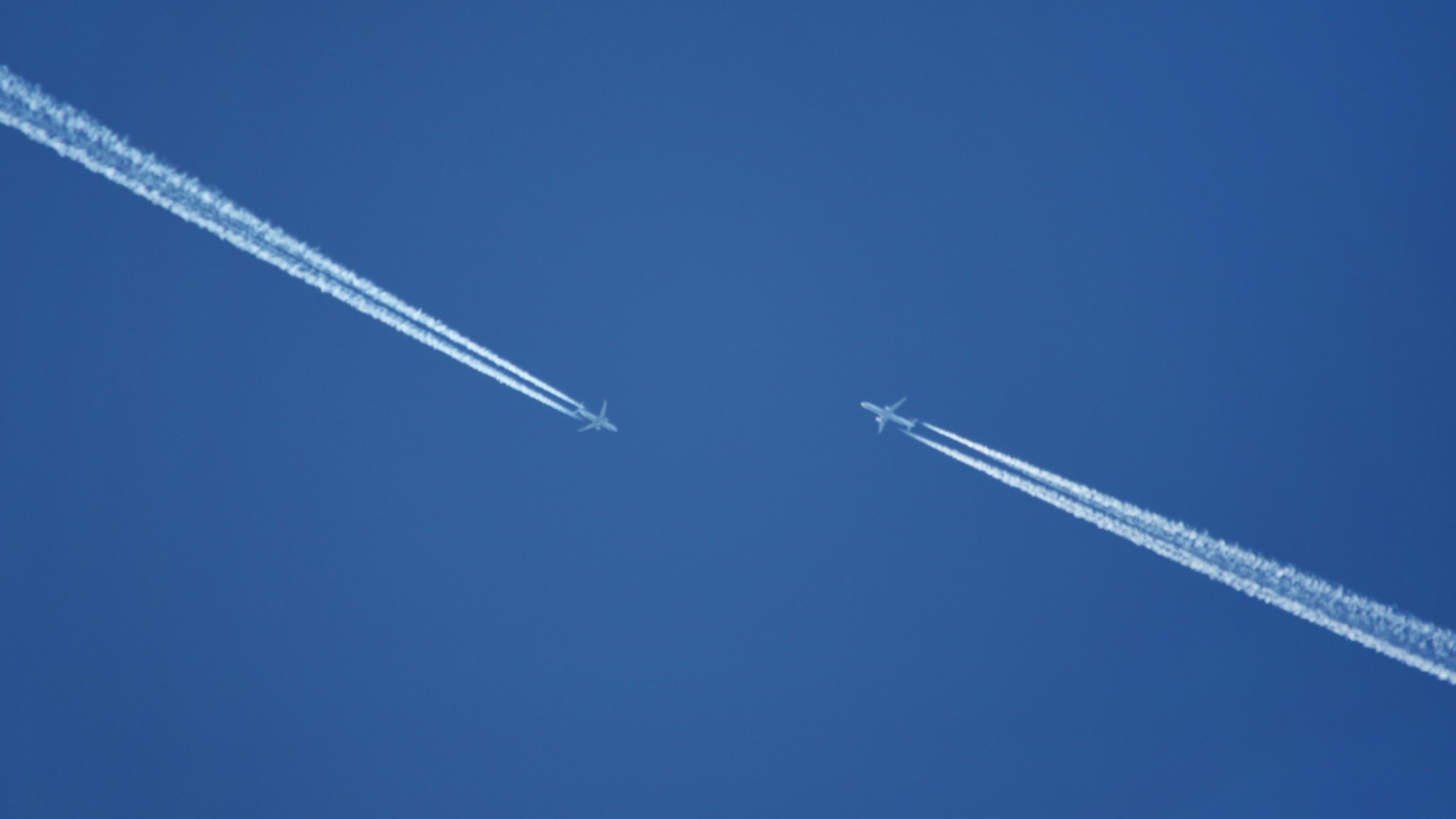Oklahoma tornado: how did it form and why was it so deadly?
Twister was a category four storm that struck the suburb of Moore with just five minutes' warning

THE DEVASTATING tornado that has killed at least 24 people and obliterated the Oklahoma suburb of Moore is one of the worst to strike in the US in decades. The twister was said to have been more than a mile wide – some reports claimed it was 2.5 miles across - and was in contact with the earth for around 40 minutes. Almost everything in its path was destroyed and the twisted metal, wood and other debris it picked up made the destruction worse. What causes a tornado? Twisters, as they are also known, form below thunderstorms when huge columns of air rising upwards through the storm suck in winds at ground level to create a vortex. "The twisting effect is triggered shortly before a thunderstorm develops, as the wind changes direction and becomes faster at greater heights," explains the Daily Telegraph. "This causes wind in the lower atmosphere to rotate in a horizontal swirling pattern, but the rotating current is then pushed upright by rising air currents within the thunderstorm." How powerful are they? The power of a tornado is measured on the Fujita scale. The one that devastated Moore is believed to have been a category four storm, one below the maximum, with winds of up to 200mph. However, measuring them is an inexact science because of the difficulty of obtaining readings. The impact of a tornado is also affected by the width of the vortex and the amount of time they are in contact with the ground. Why did this one cause so much damage? It struck a populated residential area. "The accumulated debris at its heart, including cars, simply adds to the devastating force with which it smashes through everything in its path," says The Independent. Also, when a tornado is as wide as the one that struck yesterday, other vortices appear within the main column and they can generate winds of up to 300mph, the BBC notes. What kind of warning was there? Meteorologists can monitor and track the weather systems that cause tornadoes but not the tornadoes themselves. According to the BBC, it took just half an hour for the storm over Moore to form and create the giant twister. Residents were given a warning 15 minutes before the twister touched down, but the alert was only upgraded to an emergency five minutes before the tornado struck. Why are there so many tornadoes in Oklahoma? The city sits in what is known as 'tornado alley' which runs through the states of Kansas, Oklahoma and Texas. It is here that warm, wet air blowing in from the Gulf of Mexico runs into cold, dry air from the Rocky Mountains, creating perfect conditions for the massive thunderstorms that cause tornadoes. May and June are the busiest months for tornadoes. Where does this one rank? The Moore tornado appears to be the worst to strike in the US since 158 people died two years ago, almost to the day, in Joplin, Missouri. Prior to that you have to go back to 1953 to find a more lethal twister. But it is not the first time Moore has been hit. In 1999, the same area was struck by a tornado that killed 36 people. The deadliest tornado on record struck in Bangladesh in 1989 and killed 1,300 people. Is climate change to blame? Although more tornadoes are being reported, the BBC says this is because it is much easier to report seeing a tornado, and that there are fewer places that are truly unpopulated. However, Suzanne Gray of Reading University told The Guardian: "Climate change means warmer temperatures and more moisture and that is providing more energy for the types of storms that produce tornadoes."
A free daily email with the biggest news stories of the day – and the best features from TheWeek.com
The Week
Escape your echo chamber. Get the facts behind the news, plus analysis from multiple perspectives.

Sign up for The Week's Free Newsletters
From our morning news briefing to a weekly Good News Newsletter, get the best of The Week delivered directly to your inbox.
From our morning news briefing to a weekly Good News Newsletter, get the best of The Week delivered directly to your inbox.
-
 Political cartoons for December 20
Political cartoons for December 20Cartoons Saturday’s political cartoons include drowning rats, the ACA, and more
-
 5 fairly vain cartoons about Vanity Fair’s interviews with Susie Wiles
5 fairly vain cartoons about Vanity Fair’s interviews with Susie WilesCartoon Artists take on demolition derby, alcoholic personality, and more
-
 Joanna Trollope: novelist who had a No. 1 bestseller with The Rector’s Wife
Joanna Trollope: novelist who had a No. 1 bestseller with The Rector’s WifeIn the Spotlight Trollope found fame with intelligent novels about the dramas and dilemmas of modern women
-
 Crest falling: Mount Rainier and 4 other mountains are losing height
Crest falling: Mount Rainier and 4 other mountains are losing heightUnder the radar Its peak elevation is approximately 20 feet lower than it once was
-
 Death toll from Southeast Asia storms tops 1,000
Death toll from Southeast Asia storms tops 1,000speed read Catastrophic floods and landslides have struck Sri Lanka, Indonesia, Thailand and Malaysia
-
 Can for-profit geoengineering put a pause on climate change?
Can for-profit geoengineering put a pause on climate change?In the Spotlight Stardust Solutions wants to dim the sun. Scientists are worried.
-
 How will climate change affect the UK?
How will climate change affect the UK?The Explainer Met Office projections show the UK getting substantially warmer and wetter – with more extreme weather events
-
 Can the UK do more on climate change?
Can the UK do more on climate change?Today's Big Question Labour has shown leadership in the face of fraying international consensus, but must show the public their green mission is ‘a net benefit, not a net cost’
-
 Did Cop30 fulfil its promise to Indigenous Brazilians?
Did Cop30 fulfil its promise to Indigenous Brazilians?Today’s Big Question Brazilian president approves 10 new protected territories, following ‘unprecedented’ Indigenous presence at conference, both as delegates and protesters
-
 Can the world adapt to climate change?
Can the world adapt to climate change?Today's Big Question As the world gets hotter, COP30 leaders consider resilience efforts
-
 Taps could run dry in drought-stricken Tehran
Taps could run dry in drought-stricken TehranUnder the Radar President warns that unless rationing eases water crisis, citizens may have to evacuate the capital